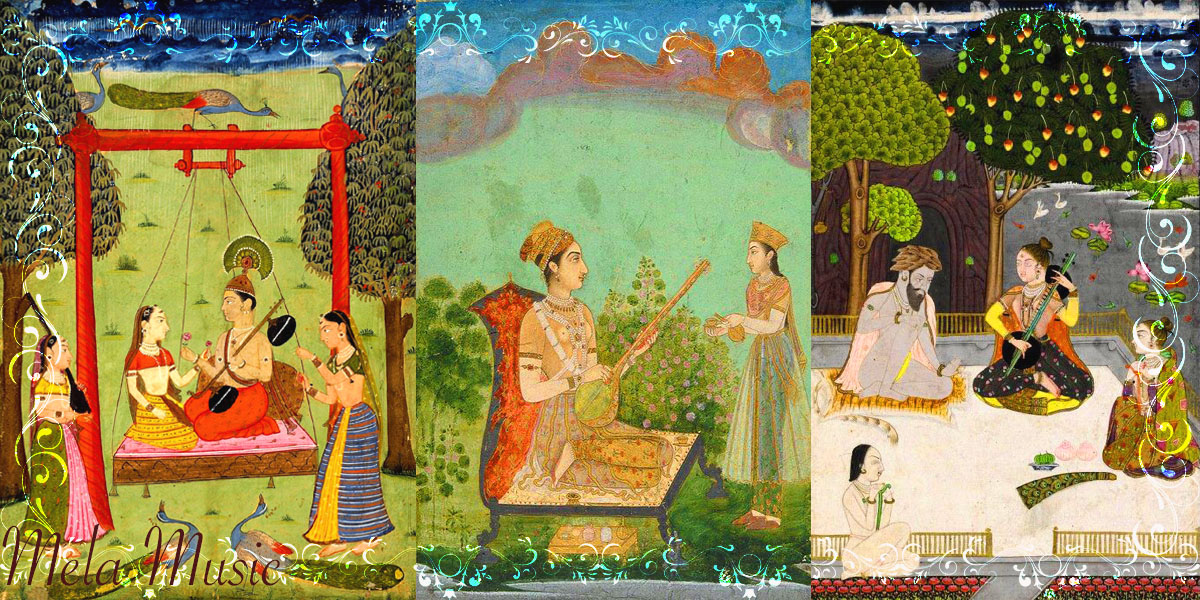
Aalap is a spontaneous and unrestrained expression that delves into the intricacies of a raga performed at a slow tempo. It gradually unfolds the essence of the raga through the exposition of its vadi (dominant note), samvadi (subdominant note), ascending and descending notes, as well as other notable features. Every raga presentation begins with an aalap, which literally means “introduction” in Indian classical music. Similar to how alphabets form words in a language, in music, we utilize the notes (SA, RE, GA, MA, PA, DHA, NI) to create melodic phrases. During the aalap, the musician gradually improvises on each note, using specific patterns to convey and explore the essence of the raga.
The aalap consists of two parts: the first part is free from rhythmic constraints, allowing for complete artistic freedom, while the latter part adheres to a specific rhythmic structure. Aalap can be classified in two ways: firstly, by its scope, which can be likened to the canvas of a painting, ranging from small and intimate to expansive and elaborate; and secondly, by the predominant classical styles of music that influence its rendition. The following categories are commonly used for classification in this regard.
[1] Aochar Aalap – A unconventional component, serves as the introductory segment preceding a more profound musical performance in any raga. It offers a broad overview of the raga, showcasing its essential characteristics through elements such as aroha (ascending scale), avaroha (descending scale), pakad (signature phrase), and the primary notes associated with the raga. The aalap also incorporates melodic embellishments like meend (gliding between notes), aash (ornamental phrases), and gamak (graceful oscillations). For instance, a khayal composition often commences with a concise aochar (initial) aalap, setting the stage for further exploration.
[2] Bandhan Aalap – The term “set on” refers to a specific type of aalap that focuses on a particular set of melodic phrases and their elaborations to gradually unfold the raga. This aalap comprises distinct sections that feature precise note-phrases exclusively associated with specific schools or styles (gharanas) of Indian classical music. These note-phrases are carefully chosen to highlight and showcase the unique characteristics and nuances of the raga being performed.
[3] Qaid Aalap – The term “Qaid” carries the literal meaning of being regulated or confined, and it involves crafting concise compositions centered around crucial notes to gradually reveal the raga. In this style, a central note is chosen as a focal point for the melodic exploration. Initially, shorter melodic phrases are employed, gradually progressing towards longer and more intricate expressions. Some refer to this style as “Rupak-Aalap” as well.
[4] Vistar Aalap – This aalap employs raga specific notes to gradually reveal the intricacies of the raga. It goes beyond the introductory nature of an aochar aalap, offering a more profound and comprehensive exploration.
Content Provided By: Sangeetpedia
